Not Set
The Admiralty armed trawler Elk was sunk by a mine off Plymouth during trials of experimental mine countermeasures equipment.
Type
Royal Navy Armed Trawler
History
The Elk was a side trawler built by the famous trawler shipyard of Cook, Welton & Gemmel Ltd. at Beverley near Hull in the north of England. Elk was launched on 21st August 1902. The 33m (108ft) long vessel was built from steel, she had a typical small trawler design for the turn of the century with wheelhouse aft of the engine; side trawlers tow their trawl nets over each side of the ship with the trawl warps or wires passing through blocks suspended from curved steel gallows to a huge winch mounted on deck in the middle of the vessel. Her first owner was Morris & Fisher in Grimsby, where she operated under the port number GY1235.
During the First World War, the Elk was hired as a minesweeper, given the Admiralty No. 706 and fitted with a 3 pdr gun. The Elk saw service in the Dardanelles in Turkey, and her contribution is noted on the Helles Memorial, the Commonwealth battle memorial for the Gallipoli Campaign. At the end of the war, she was renamed Elk II but reverted to the name Elk on return to her owners, Victoria Steam Fishing in Grimsby. In 1929, she was registered in Milford to Oliver Curphey in Hakin with port number M36, where she landed fish between October 1929 and January 1932. In June 1932, the Elk was sold to the well-known fishing boat operator William Nichols in Plymouth, who also became her skipper.
At the start of World War II, the Admiralty requisitioned many trawlers for use in minesweeping duties, including them as part of the Royal Naval Patrol Service (RNPS). The Elk was hired by the Admiralty as a danlayer in November 1939, becoming HMT Elk with Captain J. S. Bush RNR in command, she was given pennant number FY 4.24 and armed with one 6 or 12 pdr gun. Trawlers were ideal vessels for minesweeping duties as towing sweeping gear was much like towing a trawl net, so with her fishing gear removed and her fish hold converted to accommodation, the armed trawler Elk was ready to go to war. As a danlayer, she would follow the minesweepers and mark the edge of the swept channel with buoys.
The Germans began laying ground mines from aircraft in harbours and shipping channels in the early stages of World War II; the sea there was shallow, shipping traffic was concentrated, and the mines would cause a lot of disruption. Mines would be dropped by parachute into the sea; they would sink to the seabed and lie there waiting for a passing vessel to trigger the detonator. The more well-known contact mines are anchored to the seabed on a long wire and are triggered by a ship hitting them, which blows a hole in the side of the ship. These ground mines that were dropped into harbours were influence mines that could be triggered at a distance, often directly under the hull of a ship, breaking her back, and often doing more damage than a contact mine. Initially, the mines were triggered by the magnetic field of a passing ship, but by August 1940, the Germans started to use mines that were triggered by the noise made by a passing vessel. German bombers deploying mines would often drop one magnetic mine and one acoustic mine about a quarter of a mile apart.
Minesweepers could sweep an area for moored contact mines using Oropesa gear, a serrated wire towed behind and alongside the minesweeper that would cut a mine’s mooring wire, allowing it to float to the surface so it could be dispatched with gunfire. This method of sweeping had been developed in the First World War and is what Elk would have used during her first minesweeping duties at Gallipoli. But dealing with influence mines lying on the seabed required a different technique.
Acoustic mines were a new and unknown problem at the time; in the week the Elk was lost, a total of 14 acoustic mines had been detonated by HM ships passing close by them in coastal waters. Within Plymouth, the armed trawler Lord Inchcape and the trawler Encourage ![]() were sunk on 25th October, on 7th November the Free French Navy vessel Poulmic
were sunk on 25th October, on 7th November the Free French Navy vessel Poulmic ![]() was sunk by an acoustic mine while on mine watching duty, on 9th November the Elk was damaged by a mine, and on 10th November the armed trawler Kingston Alalite
was sunk by an acoustic mine while on mine watching duty, on 9th November the Elk was damaged by a mine, and on 10th November the armed trawler Kingston Alalite ![]() was sunk in the western entrance to Plymouth Sound and the St. Melante damaged. In the race to develop new countermeasures, more minesweeping trials had to be undertaken. On the 27th November, just a month after the first acoustic mine had been taken apart, the Elk was off Plymouth, trying out a new acoustic mine-clearing device. That day, she was sweeping in the approaches to the main entrance to Plymouth Sound, on the west side just off Penlee Point, moving at a steady 5 knots with the armed trawler HMT Sasebo nearby. Over the port side of the ship, she had an experimental steam-powered apparatus designed to set off acoustic mines. This new device had been created by the Royal Naval Engineering College in Keyham, Plymouth, by order of the Commander in Chief (CinC) Western Approaches. While busy sweeping, there was a big explosion right underneath the ship, which lifted the Elk out of the water and fractured her hull from the engine room to the stern. The vessel caught fire but stayed afloat for 45 minutes, allowing all her crew to escape unharmed. Many ships had passed over the same location where Elk was sunk, so perhaps the experimental noise-making gadget she was testing worked too well. The Admiralty were unaware of this new design and in a letter to CinC Western Approaches on 21st December, they requested that the Admiralty be consulted before any other experiments were undertaken!
was sunk in the western entrance to Plymouth Sound and the St. Melante damaged. In the race to develop new countermeasures, more minesweeping trials had to be undertaken. On the 27th November, just a month after the first acoustic mine had been taken apart, the Elk was off Plymouth, trying out a new acoustic mine-clearing device. That day, she was sweeping in the approaches to the main entrance to Plymouth Sound, on the west side just off Penlee Point, moving at a steady 5 knots with the armed trawler HMT Sasebo nearby. Over the port side of the ship, she had an experimental steam-powered apparatus designed to set off acoustic mines. This new device had been created by the Royal Naval Engineering College in Keyham, Plymouth, by order of the Commander in Chief (CinC) Western Approaches. While busy sweeping, there was a big explosion right underneath the ship, which lifted the Elk out of the water and fractured her hull from the engine room to the stern. The vessel caught fire but stayed afloat for 45 minutes, allowing all her crew to escape unharmed. Many ships had passed over the same location where Elk was sunk, so perhaps the experimental noise-making gadget she was testing worked too well. The Admiralty were unaware of this new design and in a letter to CinC Western Approaches on 21st December, they requested that the Admiralty be consulted before any other experiments were undertaken!
Diving the Elk
Plymouth Sound, off Penlee Point
HMT Elk was reported to have been found in 1977 but was finally located in June 1981 when the Hydrographic Office moved her location on the chart; this was noticed by John Vaudin, who told diver Steve Carpenter. Steve found the wreck with her hull intact, lying upright on a flat sandy seabed with her bows to the northwest (329° T). The wreck had been wire swept so the wheelhouse and masts had sheared away and now lay on the seabed on the port side, leaving just the galley, toilet and engine room hatch in place. The upper deck used to be covered in white dead men’s fingers, so in good visibility divers would often see the whole wreck outlined on the seabed as they descended the shot line. The Elk became the subject of further investigations by Plymouth Polytechnic and was surveyed using side scan sonar for many years after.
Today, the remains of the Elk are still upright on a sandy seabed, largely complete but missing the deck superstructure, deck and masts. Place the shot at 50° 18.424N 004° 10.306 W, and it will be just to the north of the wreck alongside the boiler. Starting from the bows at deck level, a depth of 25.4m plus tide height, you first notice the stem post as the gunwales have long since fallen away. Until recently, the foredeck was in place with the anchor windlass fixed to the deck beams, but this has now collapsed down into the forward compartment. The empty fish hold is full of sand and silt to a depth of approximately 2m, leaving 3m of space between the seabed and the deck above. Aft of the collapsed foredeck at deck level is the remains of a hatch into the fish hold, the step for the main mast and the three rollers used to guide the trawl and sweep warps. Further aft is the large trawl winch in the centre of the deck, mounted on top of what used to be the coal bunker.
The engine room was covered with a roof when the wreck was first visited by divers, but it is now completely open and filled with sand and debris. With the roof in place, it was still possible to swim through the engine compartment. Access was through a hole in the starboard side [L], but it was a tight squeeze between the machinery and the hull, and you had to avoid the big conger eel that lived in there. With the engine room now open, the top of the single large cylindrical boiler can be seen, and aft of that is the triple-expansion steam engine with its three cylinders of different sizes.
Behind the engine are the remains of the galley and toilet that were under the wheelhouse - the toilet was still in place when the wreck was first dived. The fragmented remains of a deck light can be seen over the stern compartment. A row of large batteries lay along the starboard side, which may have been used as part of her minesweeping gear or as sinker weights for the dan buoys she laid to mark the swept channel. The stern is largely intact, where the remains of the steering quadrant can be seen still fitted on the top of the rudder, but the counter stern has been pushed upwards and forwards, perhaps hinting that the Elk landed stern first when she sank to the seabed. Over the stern rail and down to the seabed, a little way below, you can just see the top of the rudder post showing above the sand under the stern counter. On either side of the ship lie debris from the vessel, masts and sections of the upperworks, while at the bows, a 2m deep scour pit has formed so the Elk's forefoot and deep keel can be seen.
- This ship is similar in size and shape to the deeper Unicorn
 wreck off Plymouth.
wreck off Plymouth. - A picture of a trawler called Elk with portmark H440 is a different vessel, one built in 1898 and scrapped in 1933.
- The site plan of the Elk was created using a photomosaic at a time before 3D photogrammetry was common, see link
 .
.
Nearby wrecks include the Kingston Alalite ![]() , the FS Poulmic
, the FS Poulmic ![]() , the Rame Barge / Leen
, the Rame Barge / Leen ![]() and HMS Scylla
and HMS Scylla ![]() ,
,
Last updated 20 December 2025
Information
Date Built:
1902
Type:
Side trawler
Builder:
Cook, Welton & Gemmel Ltd., Beverley, yard number 329
Owners:
Morris & Fisher, Grimsby.
Victoria Steam Fishing, Grimsby
Oliver Curphey, Milford
William Nichols, Plymouth
Official Number:
113235
Length
33m (108ft 7in)
Beam
6.4m (21ft)
Draft
3.4m (11ft 2in)
Construction
Steel
Propulsion
62 hp triple expansion steam by Amos & Smith in Hull, single boiler, single screw, ketch rigged.
Tonnage
181 tons (gross), 70 tons (net)
Nationality
British
Crew
10
Master
Captain J. S. Bush RNR
Owners
Admirlaty, Royal Naval Patrol Service (RNPS)
Portmarks
GY1235, M36
Date of Loss
27th November 1940
Manner of Loss
Mined
Outcome
Abandoned
Reference
NMR 1479237, UKHO 17643
Mines and Minesweepers
A significant proportion of our whole war effort had to be devoted to combating the mine. A vast output of material and money was diverted from other tasks, and many thousands of men risked their lives night and day in the minesweepers alone.
Winston Churchill, the Second World War
The Elk was one of 120 requisitioned trawlers sunk during World War II from a total of 300 minesweepers that were lost.
Not Set
Leave a message
Your email address will not be published.
Click the images for a larger version
Image use policy
Our images can be used under a CC attribution non-commercial licence (unless stated otherwise).
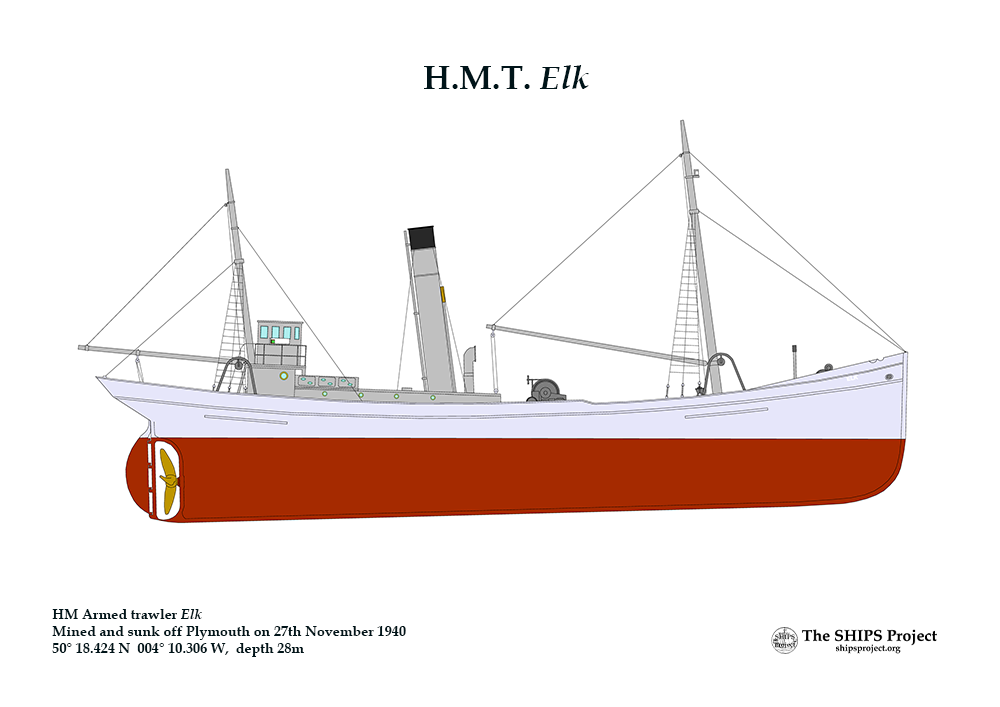
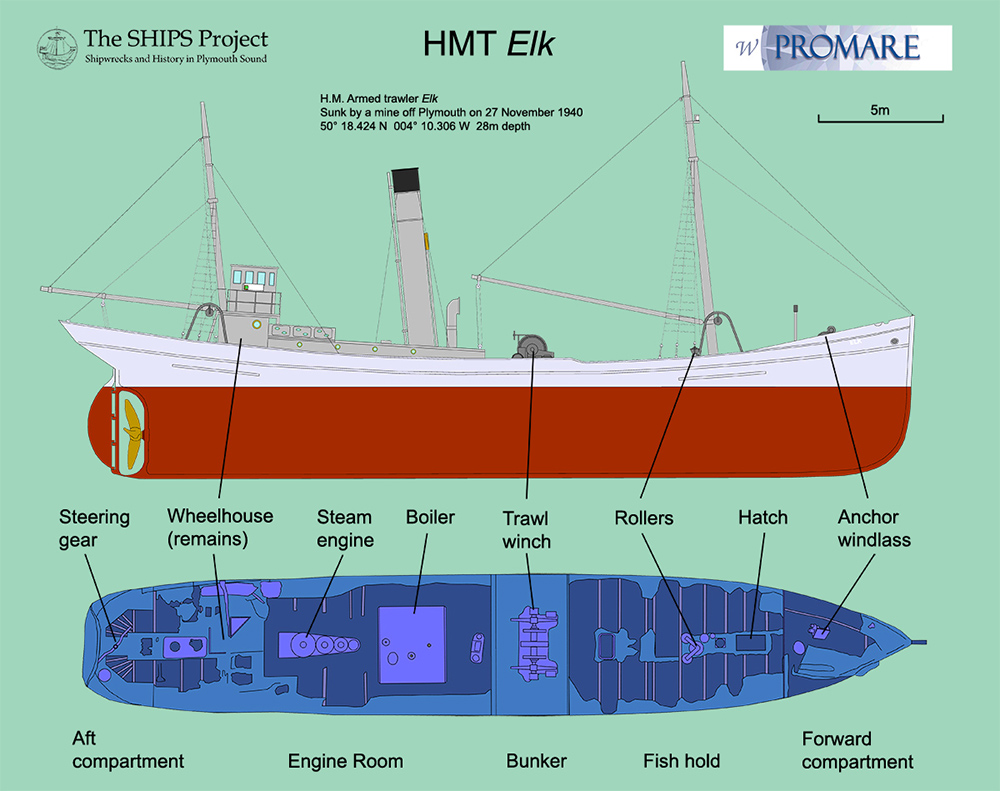



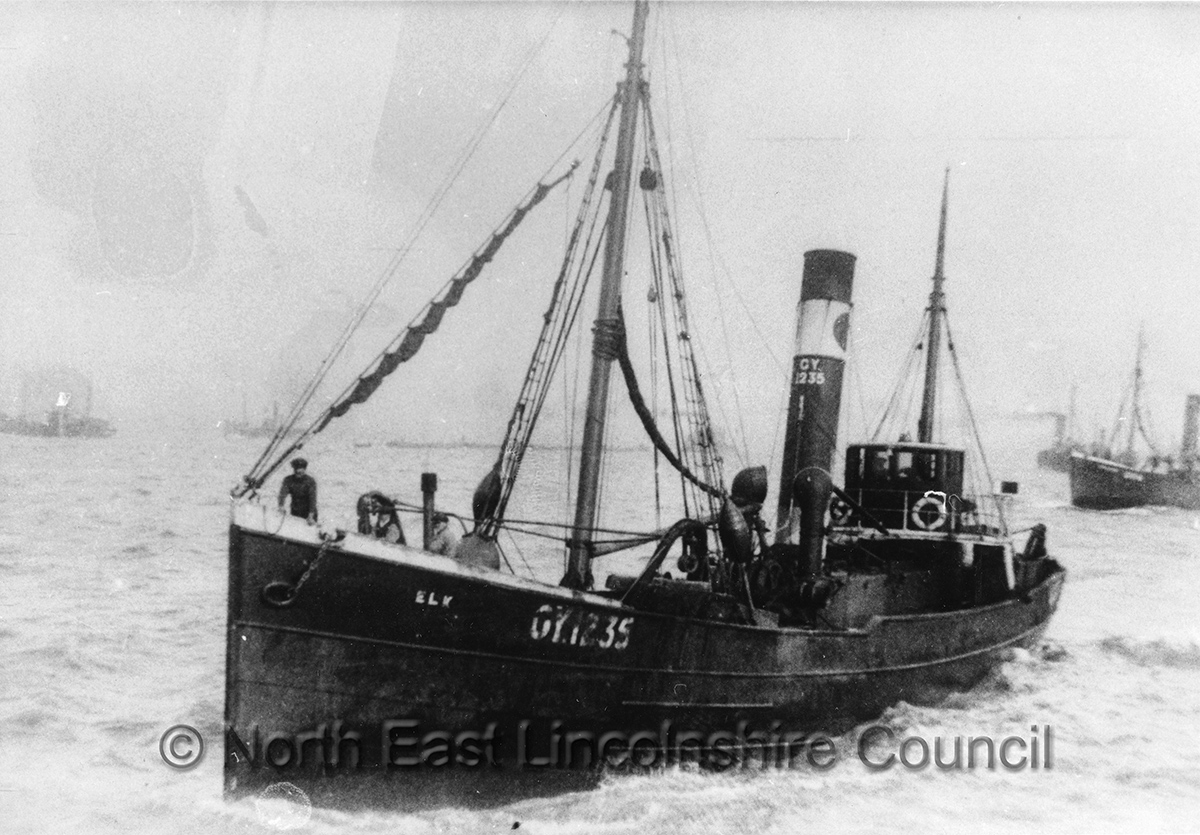
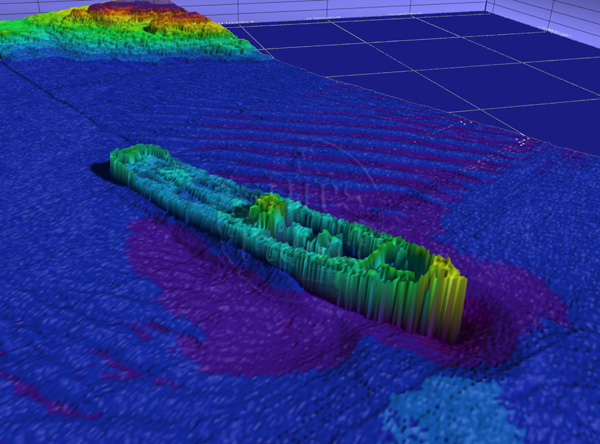
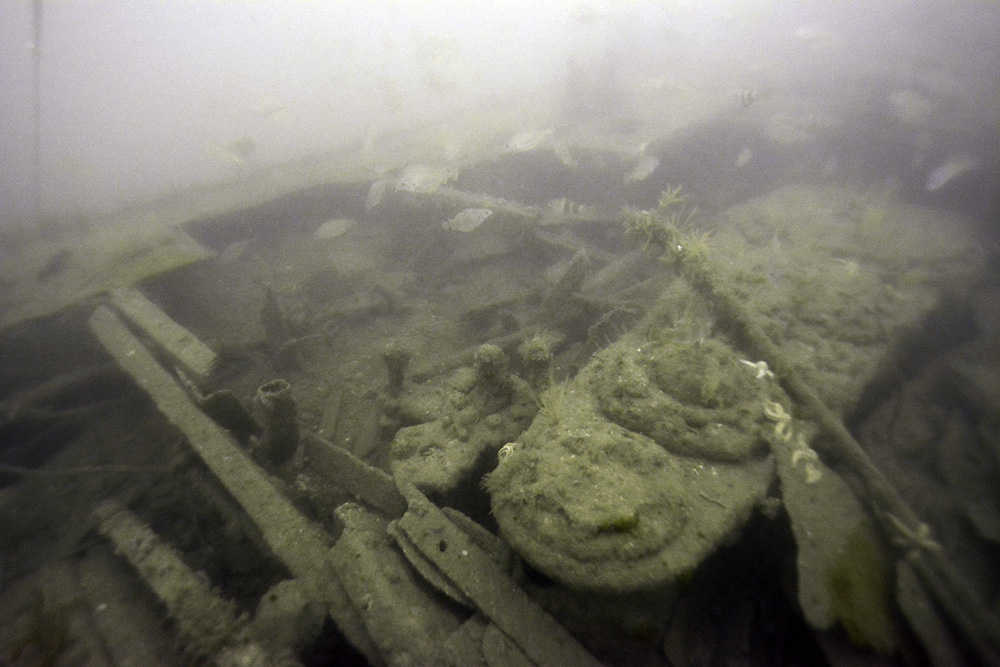
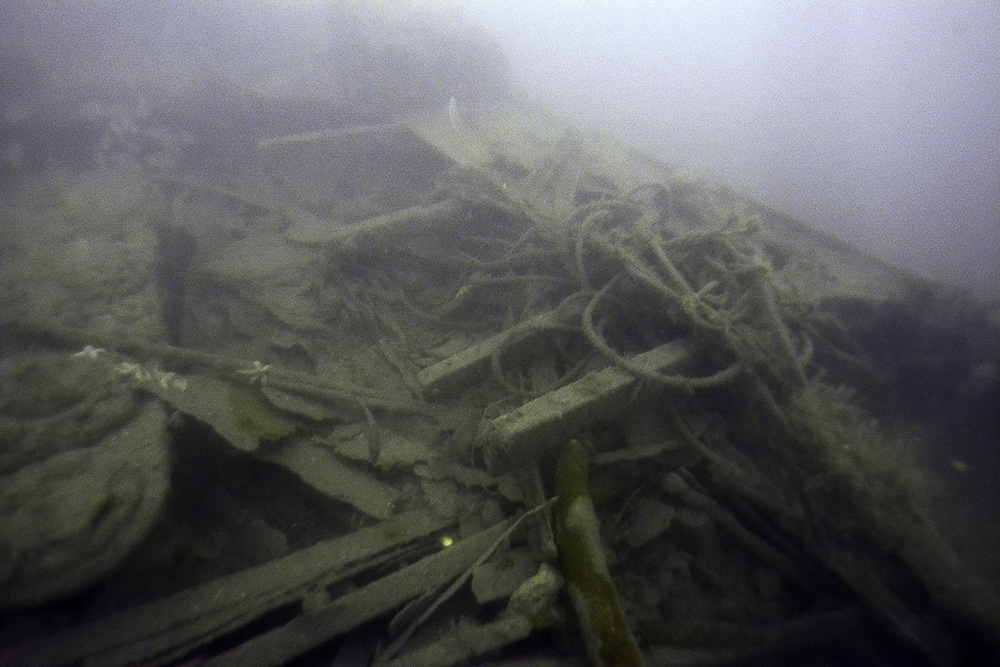
![Compass binnacle from the armed trawler HMT Elk [Peter Mitchell]](../images/Wrecks/SHIPS_Wk_Elk7.jpg)